Have you ever wondered how to maintain a clutter-free home? If you have an issue with clutter, you may have wondered how to keep it clutter-free after all of your decluttering is done. Let’s dive in and tackle that issue and then learn how to declutter and reclaim your space.
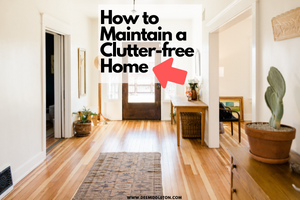
Today, I’ll give you some excellent insight from the book, Lose the Clutter, Lose the Weight, by Peter Walsh. Follow this link to get the audio book for free.
What can we learn from Peter Walsh, an expert organizer? Let’s find out.
“The New Realities That Will Maintain Your Clutter-Free Home
I’ve said many times that successful decluttering and organizing doesn’t start with “the stuff.” It’s not about the stuff. So often we get caught up in the things we own—especially if they’re so overwhelming that they cause heartache and stress—and forget that change comes first in the way we think about what we own. It starts with our mindset and our routines.
So be sure to incorporate these ideas into your daily life to maintain and build upon the successes you’ve already achieved. These methods of maintaining a clutter-free and organized home may actually seem too simple. But I can guarantee that the simpler the maintenance strategy, the greater the impact it will have as you move forward.
How to Maintain a Clutter-free Home

1. Never forget the vision you have for your life, your home, and your personal spaces. I’ve asked you to detail your vision for the space you’re tackling each week. Your vision is the foundation for deciding what objects come into a space, what you put into your body, and how you spend your time. By constantly revisiting the question “What do I want from my life?” or “from my space?” or “from my body?” you will be sure to keep your focus on the things that help you create your best life.
2. “Later” does not exist. Now is the time to do the things you need to do. As I tell people at every opportunity I have, clutter is decisions delayed. The moment you begin to procrastinate—“I’ll put this in its proper place later” or “I’ll throw this away later because I feel too guilty to get rid of it now” or “I’ll make the bed later,” or use any sentence that contains the word “later”—you have begun to lose the battle against your stuff.
Instead, make all your decisions in the present moment. As you’ve learned throughout this book, remaining aware of the present moment—which is the only time that truly exists—dramatically improves your ability to live the life you really want.
This “I’ll get to it later” thinking is very easy to slip into. It’s the path of least resistance. It convinces us that we’re dealing with things, even though we’re not. If the thought occurs to you “that you need to put something in its proper place or throw it away, do it now. “Later” is the best friend of clutter. Don’t make it your friend, too.
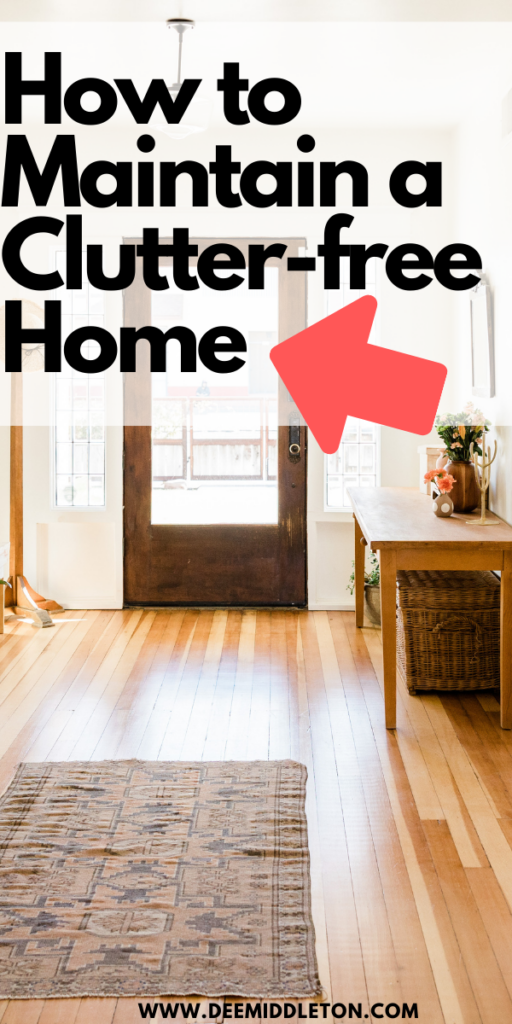
3. Finish what you start. On a similar note, if you realize you need to do a task, carry it out to its end right now. Don’t do part of it and plan to finish the rest later. If you stop too soon, then “resume later, the task will take more time. In the simplest terms, complete the cycle!
Your laundry provides a great example of what I’m talking about. Have you ever done this? You run the washer but don’t get around to drying the laundry. Two days later, you find that the damp load of clothing has turned into a mildewed, smelly mess. You have to waste your time, detergent, and electricity rewashing it before you can dry it.
Or maybe you’ve snacked on a bowl of salsa with chips, then set the bowl in the sink. The salsa remnants form a hard crust overnight, and you have to scrape it out before you put it into the dishwasher. Add up enough of these extra demands, and you’ve lost a substantial chunk of time you could have applied elsewhere. That’s one of the benefits I hope you discovered from the Lose the Clutter, Lose the Weight program.
Yes, living a decluttered lifestyle does take a few extra moments here and several minutes there throughout the day. But often, these moments save you from getting mired in a lengthier hassle later. “No matter the task, complete the cycle. If you start a load of clothes, put them in the dryer when they’re washed. When your clothes are dry, fold them and put them away instead of “allowing wrinkles to set in while they linger in a pile.

When you use a dish, rinse it off and put it in the dishwasher right away. When you empty the container of milk, immediately jot it down on your shopping list. When you finish the toilet paper, replace the roll. When your car is running low on gas, fill it at the next station you see. When you bring the mail into the house, throw out the junk, open everything, and put items that need attention in the tray on your desk.
If you open something, close it. If you get something out, put it away. If you move something, put it back where it belongs. If you borrow something, return it. Regardless of the task, the key to maintaining an organized space is the same: Finish the cycle!
4. Honor and respect the physical limits of your space. I began this chapter with an emphasis on the limits of your space, but it’s worth repeating here. This program has taught you to designate a space for the things you have, with a place for everything and everything in its place.
Thus, you should have a clear idea “of how many items each space within your home will hold: How many shirts will hang in your closet; how many containers of berries you can fit into the produce drawer of your refrigerator; how many pairs of socks will go in your dresser and still allow the drawer to close; how many books will fit on your bookshelves; and how many bins of holiday decorations will reasonably fit in your garage while still providing room for your car.
By working within the limits that your home places on you, the things you own and the spaces that you have will stay tidy, uncluttered, and organized.
5. One in, one out. Maintaining the limits you’ve established is easier when you follow the simple technique of removing an item from your home for every item of a similar kind that you bring in.
A new one comes in, an old one must go out. When you come home from a back-to-school shopping trip, your kids have to get rid of as many clothes as they add to their closet. When you bring home new shoes, an old pair must go. When you buy a new can of beans, you have to eat or get rid of the can that was already in your cupboard. This technique maintains a balance in your home so that it never again becomes overstuffed. Practice the one in, one out technique until it becomes a natural part of the way your family operates.”
Excerpt From
Lose the Clutter, Lose the Weight
Peter Walsh
Now that we know how to maintain a clutter-free home, let me share with you some of my best tips for Cleaning a Cluttered House. I want to help you learn the Step By Step process I created for How to Organize a Cluttered House. You’ll find my Declutter Calendar and tips for How to Start Cleaning When You Are Overwhelmed throughout this post and my Declutter Your Home Printable Checklist and my Thorough Cleaning Checklist at the end of this post.
You can get the complete digital printable copy of the Year Long Thorough Declutter Series Calendar and Checklists here. The printable digital download is delivered to your email. It includes 25 pages of printable calendar pages and checklists like the one below to help you declutter every room in your home. You can find that printable checklist here.
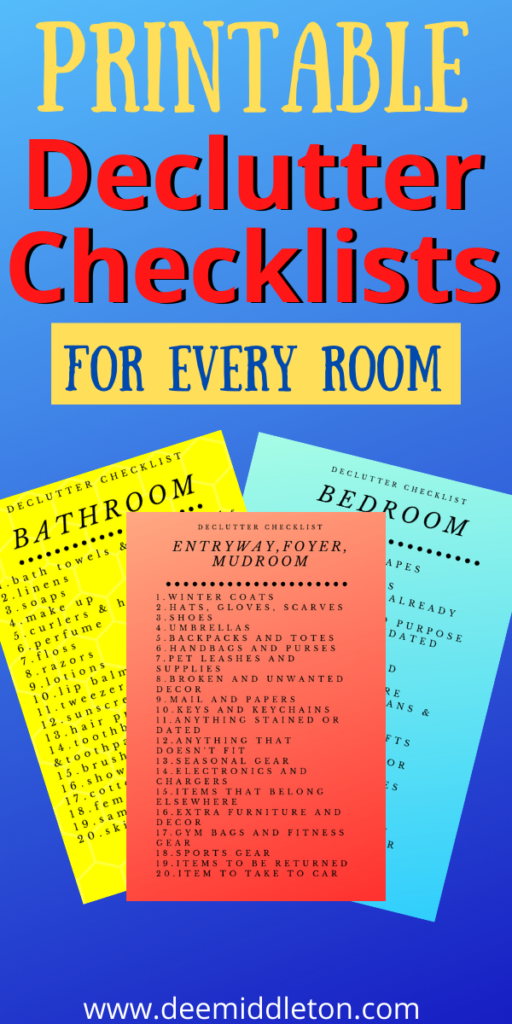
Prefer video to reading? You can subscribe to the declutter video series via youtube by watching the video below and clicking subscribe on youtube.
Struggling with the daily housekeeping chores? Check out my ebook on this topic, entitled Make Over Your Homemaking. Use this link to get it at a discounted price.
How to Declutter
Supplies Needed:
1. boxes -preferably ones you can donate (Avoid plastic storage bins because you may be tempted to just store the items and not part with them.)
2. sturdy trash bags
3. marker/pen to label boxes
Decluttering Tip: Avoid using storage bins to declutter. Storage bins tend to tell your brain to “store” the items for later. That is just delaying decisions. If you aren’t getting rid of items when you declutter, you are not truly decluttering. This is why I recommend a trash bag, also. A trash bag tells your brain to “trash” the item.
How to Declutter:
1. Start by eliminating trash first- use a sturdy trash bag
2. Sort items by category if needed so you can see what you have
3.Get rid of duplicate items, broken items, outgrown clothes and shoes, anything you’ll never use again
4. Box up the donations and trash/recycle the rest
5.Select a charity to donate your items and schedule the pick-up if that is an option
Need to deep clean after your declutter? I have a room specific cleaning checklist for you to guide you along.
You can get your printable Daily Housekeeping Routine and Deep Cleaning Your House Schedule here. This 15 page printable kit is delivered digitally to your email for you to print and personalize. What Does a Deep Clean Include? It includes a daily schedule, calendar pages, and deep cleaning checklists for every room and area of your home. Below is a sample page of what you’ll get in my printable set designed to help you make a Housekeeping Schedule for Your Home.
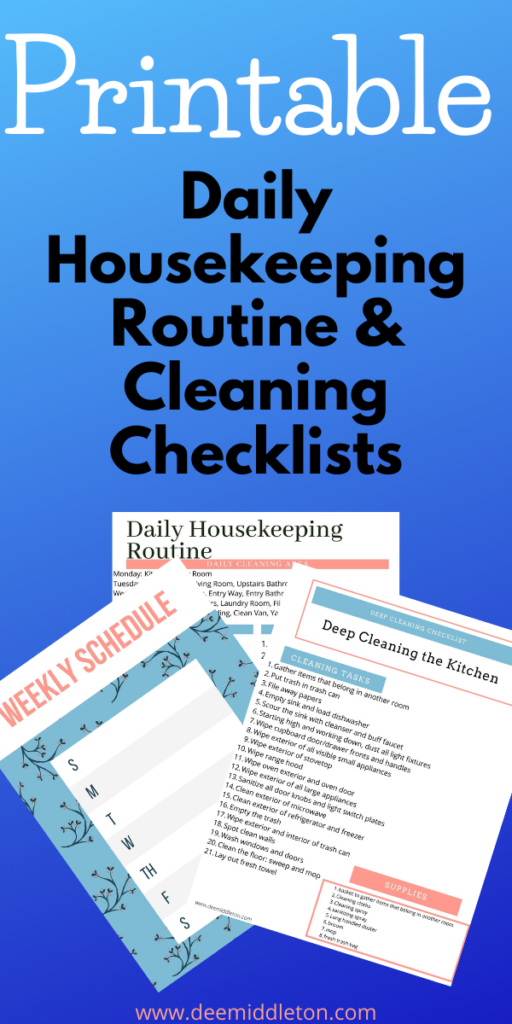
Ever wonder what contributes to your clutter problem? Read more here.
I hope I have answered the question of How to Maintain a Clutter-free Home and how you can begin your home declutter. Let me know in the comments below.
Affiliate Disclosure: This post contains affiliate links. Should you choose to buy through one of my links, I may be compensated at no additional cost to you.
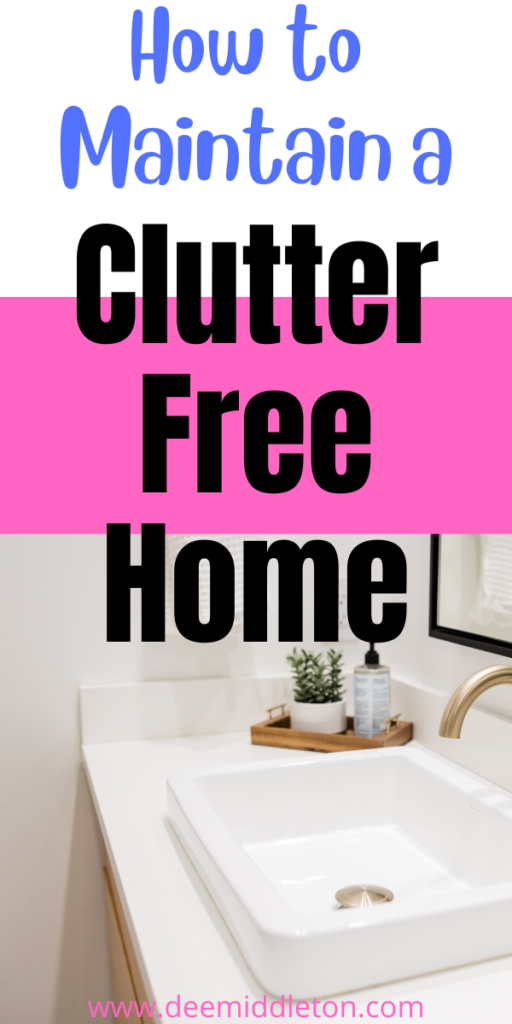

Recent Comments